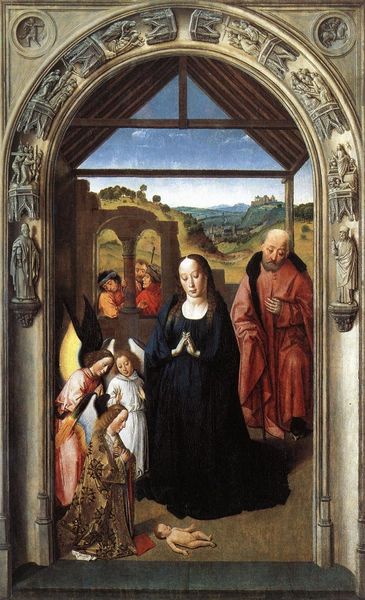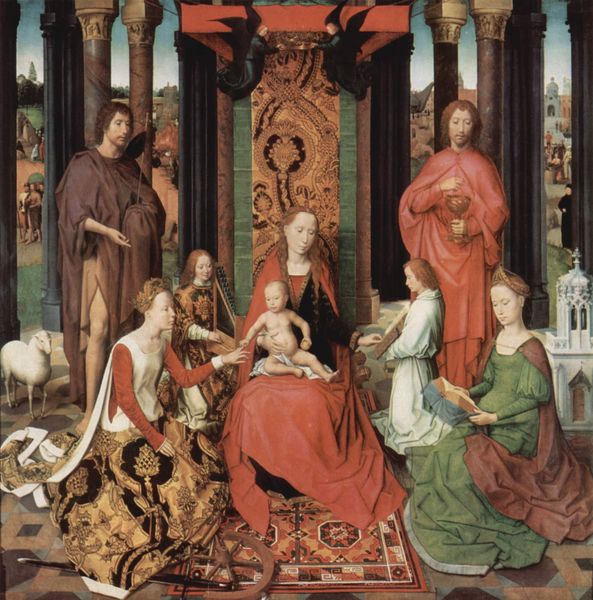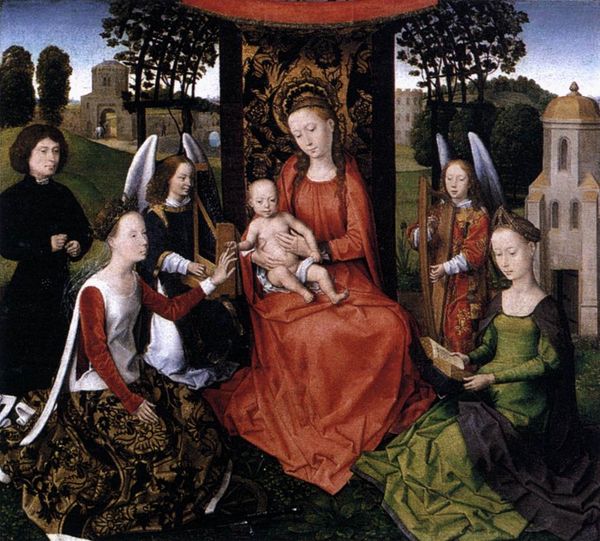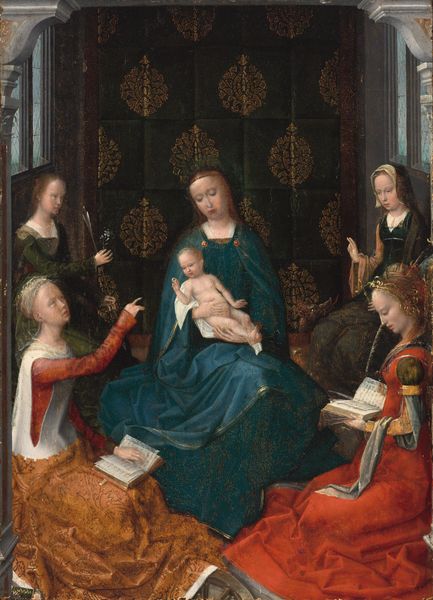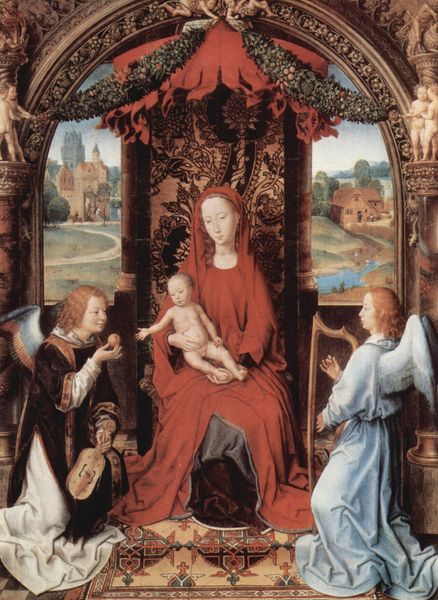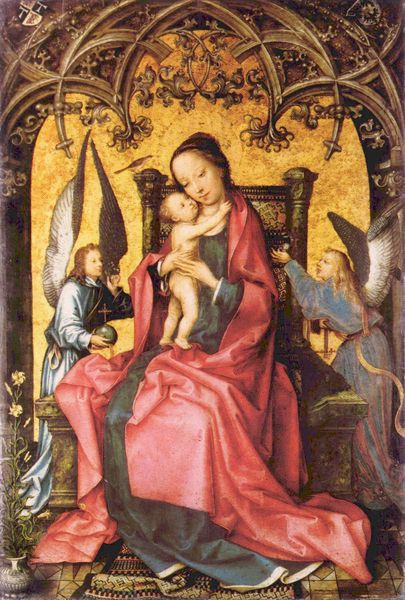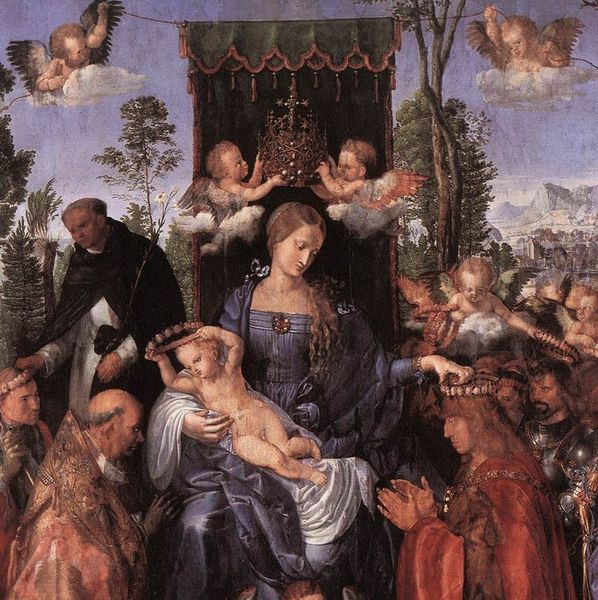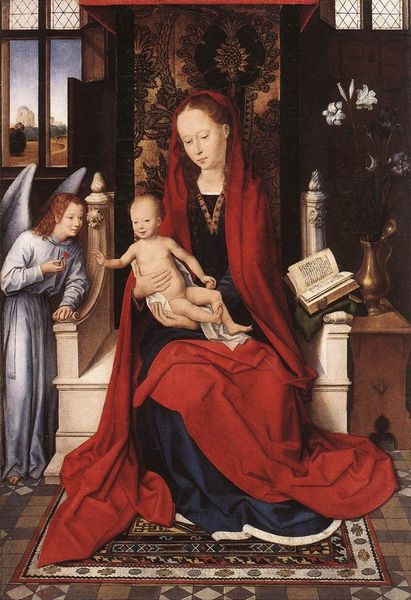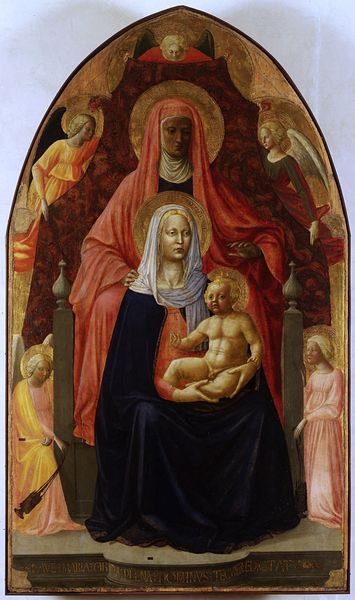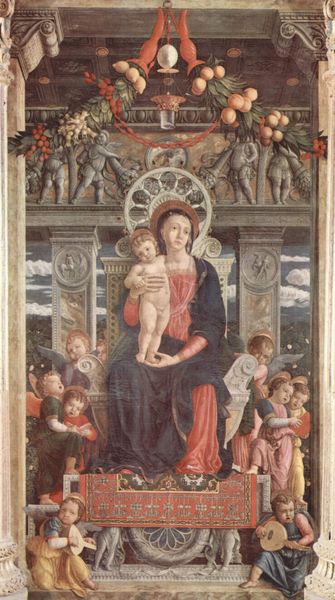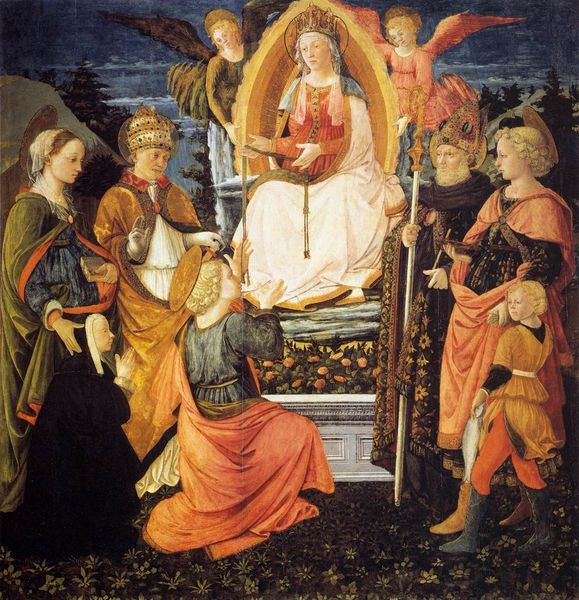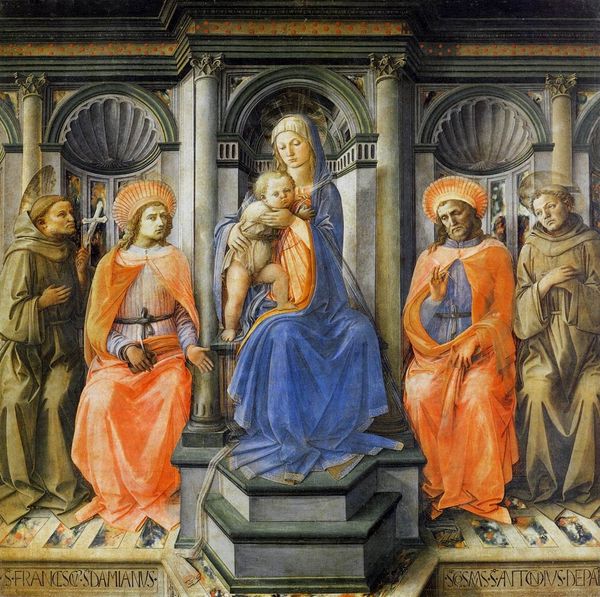
painting, oil-paint
#
portrait
#
medieval
#
narrative-art
#
painting
#
oil-paint
#
figuration
#
oil painting
#
genre-painting
#
northern-renaissance
Dimensions: 25 x 15 cm
Copyright: Public domain
Editor: Hans Memling’s "Diptych of Jean de Cellier," painted around 1475, depicts what appears to be the Virgin and Child with Saints in an enclosed garden. The detail is striking! The expressions, the landscape in the background, everything is rendered so realistically. It seems less ethereal and more human than a lot of art from the period. As a historian, what do you see when you look at this? Curator: This piece, and others like it, demonstrate the shift in the late 15th century towards art serving as a reflection of worldly power and patronage. Memling was hugely popular with the rising merchant class in Bruges. Who commissioned this diptych and where it was displayed originally tell us a great deal. It’s a very private scene. What does this tell us about the role of religious art for private citizens? Editor: I hadn’t thought about the commission itself. It was made for private devotion then? Curator: Most likely. It served a very different function than the massive altarpieces of the earlier medieval period, which were aimed at a broad, public audience. Memling produced exquisite work at a manageable scale, prized for its artistic value by the owner and select observers rather than being a universal public symbol. How do you see the diptych interacting with social status in the Netherlands at this time? Editor: Knowing it was probably commissioned by a wealthy merchant suddenly makes those details, like the jewels, clothes, and serene setting, seem really pointed. It shows the owner’s place in the world. I guess art’s function can change depending on who is consuming it? Curator: Exactly. Consider this image alongside records of social mobility during that time, and you can glean much about the anxieties and aspirations of its commissioner and society as a whole. These portraits weren’t just made; they participated in making meaning for both the individual and his community. Editor: Wow, I definitely have a lot to think about. Thanks, that makes a huge difference in how I see it.
Comments
No comments
Be the first to comment and join the conversation on the ultimate creative platform.
